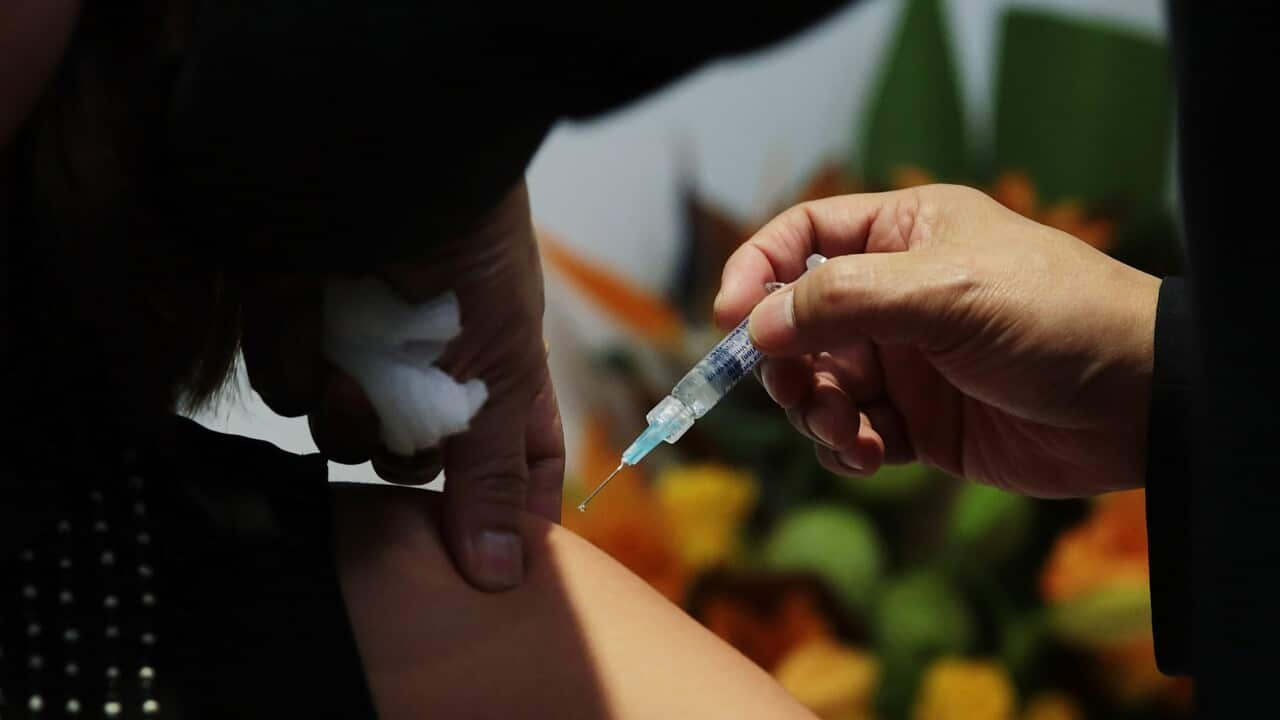Key Points
- A Queensland medical research institute is trialling a new vaccine, which could mean the end of annual flu jabs.
- Conventional flu vaccines are updated every year as the virus mutates, which reduces their efficacy.
- Researchers say the new vaccine could offer years of protection.
At the onset of winter every year, Australians are reminded to get their annual flu shot.
But in a few years' time, that could change.
A new vaccine is being trialled by Queensland-based medical research institute Mater Research which, if successful, could offer broader protection over a longer period of time.
So why do we need to get vaccines every year, how do they work, and could annual vaccines become a thing of the past?
Why do we need to get annual flu jabs?
Conventional flu vaccines are updated every year, with annual vaccinations recommended for people aged six months and over.
Kirsty Short is an associate professor at the School of Chemistry and Molecular Biosciences at the University of Queensland and researches influenza, , and viral pandemics.
She said the influenza virus changes every year, meaning a vaccine we get one year will not provide protection the next.
"Over a season, the flu virus will mutate; the virus that comes out at the end of the season is not the same as the one at the start of the season," she said.
"That means if you had a vaccine at the start of the season, the virus has mutated so much that the vaccine provides limited protection by the end of the season or next year's season."
Vaccines are updated each year according to which strains are circulating, Dr Short said.
But our current vaccines focus on surface proteins, which are constantly evolving.
"The virus mutates a lot, and current vaccines that we have focus on the surface proteins of the virus which are the parts of the virus that mutate the most," she said.
"So it's very hard to get cross-protective immunity because the target of the immune response keeps changing."
What is the new vaccine and how does it work?
The universal flu vaccine, named OVX836, is now being trialled across Australia, with Mater Research leading the study and over 600 participants set to take part.
Paul Griffin, Director of Infectious Diseases at Mater Health Services, said the vaccine targets parts of the virus that are less susceptible to mutations, meaning one dose could protect recipients for several years at a time.
"This new vaccine targets the internal nucleoprotein ... which doesn't change anywhere near as much," he said.
"This vaccine uses some really innovative technology that gets really good B and T cell responses against that nucleoprotein, so we can expect good protection against basically every flu strain."
Dr Griffin said while the results from preliminary clinical trials overseas have been encouraging, it will be several years until the vaccine could be available.
In the meantime, he says Australians need to continue getting vaccines at the start of the flu season - typically between May and October - each year.
"While it is really exciting that we are trialling new vaccines ... it doesn't diminish the importance of the existing flu vaccines," he said.
"We certainly want to continue to encourage uptake of the existing vaccine, which is well below where we need it to be at the moment."
Why do you need to get vaccinated?
Influenza is prolific every year, and Australia has had more than 40,000 lab-confirmed cases of influenza and 44 deaths in 2023 so far.
The virus can affect people of all ages, but is especially serious for young babies and children, pregnant women and people with underlying medical conditions.
Dr Griffin said the number of cases diagnosed so far in 2023 could indicate a difficult flu season ahead.
"When you add that to the ongoing burden of Covid, that does make for a really challenging winter for our healthcare systems and people, particularly those most vulnerable to both of these viruses."
Vaccines are free under the National Immunisation Program for Aboriginal and Torres Strait Islander people, children aged six months to five years, pregnant women, people over 65, or those who are at higher risk due to medical conditions.




